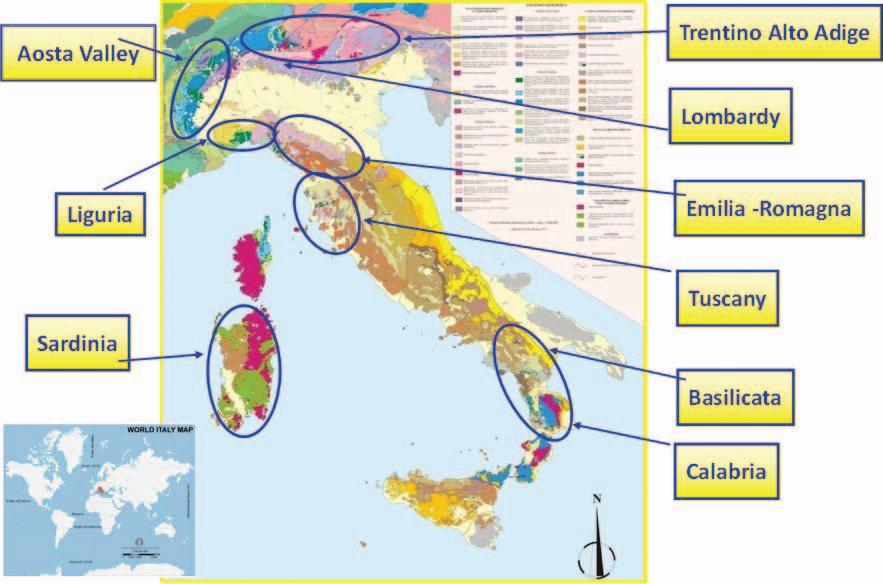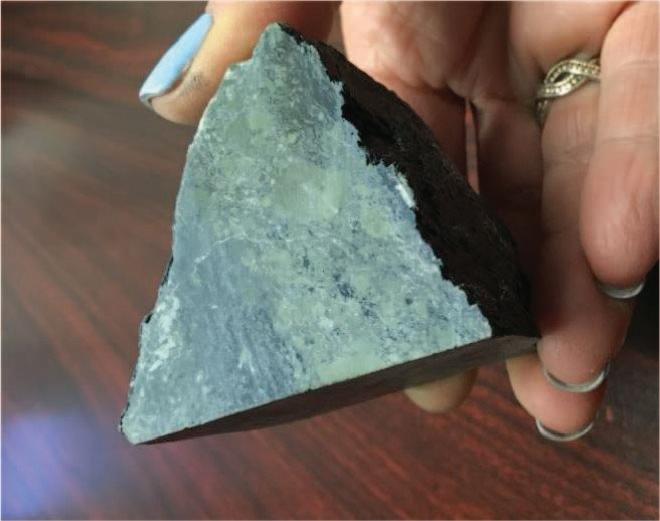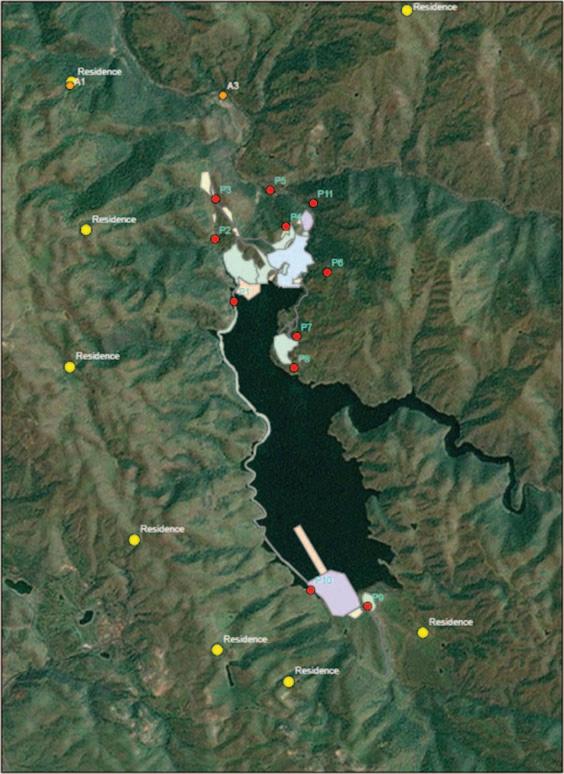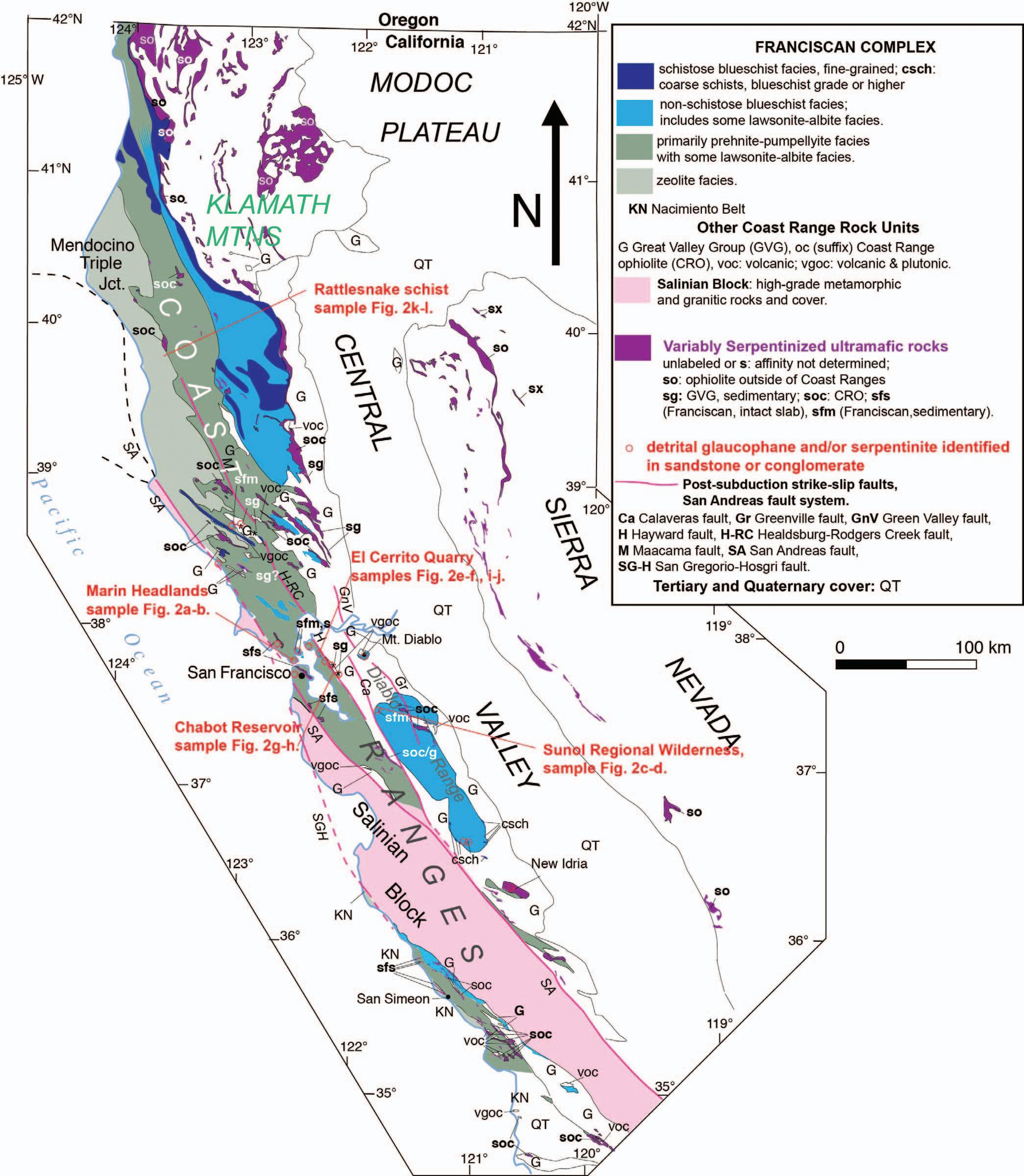Asbestiform Minerals of the Franciscan Assemblage in California with a Focus on the Calaveras Dam Replacement Project R. MARK BAILEY* Asbestos TEM Laboratories, Inc., 600 Bancroft Way, Suite A, Berkeley, CA 94710
Key Terms: Asbestos, NOA, Glaucophane, Blueschist, Amphibole, Franciscan ABSTRACT The San Francisco Bay Area is underlain by bedrock of the Franciscan Assemblage, which outcrops in numerous places. A significant portion of these outcrops consists of rock types that contain both regulated and unregulated asbestiform minerals, including ultra-mafic serpentinites, various greenstones, amphibolites, blueschist, and other schists (talc-tremolite, actinolite, etc.). These rocks are a legacy of tectonic activity that occurred on the west coast margin of the North American plate ∼65–150 MY ago during subduction of the East Pacific and Farallon plates. The Calaveras Dam Replacement Project (CDRP), located in Fremont, California, is an example of an area within the Franciscan Assemblage that is substantially underlain by metamorphosed oceanic sedimentary, mafic, and ultra-mafic rocks in a tectonic subduction zone mélange with highly disrupted relationships between adjoining rock bodies with different pressure/temperature metamorphic histories. In order to protect the health of workers and residents in the surrounding area, an extensive effort was taken to identify, categorize, and monitor the types, locations, and concentrations of naturally occurring asbestos at the site. Using a combination of geologic field observations and transmission electron microscopy, energy dispersive X-ray, and selected area electron diffraction analysis of airborne particulate and rock/soil samples, the CDRP was discovered to contain chrysotile-bearing serpentine. It also had as a range of amphibole-containing rocks, including blueschist, amphibolite schist, and eclogite, with at least 19 different regulated and non-regulated fibrous amphibole minerals identified. The extensive solid solution behavior of the amphiboles makes definitive identification difficult, though a scheme was created that allowed asbestos mineral fingerprinting of various areas of the project site.
*Corresponding author email: mark@asbestostemlabs.com
INTRODUCTION The Calaveras Dam site lies at the south end of the Calaveras Valley (Figure 1) in Fremont, California, within the Diablo Range, one of the major California coastal ranges. Bedrock at the site consists of Franciscan Assemblage and Great Valley Sequence rocks. In 2001, the existing dam, which was not engineered for earthquake safety, was found by the California Department of Water Resources, Division of Safety of Dams, to have an unacceptably high potential to fail during a maximum seismic event from nearby faults to the west: the Calaveras (∼¼ mi), the Hayward (∼5 mi), or the San Andreas (∼20 mi). As a result, the water level at the dam was lowered to 40 percent of capacity, a considerable loss of water storage capacity for the San Francisco Public Utility Commission, particularly as the Calaveras Reservoir is the second-largest source of freshwater for the city of San Francisco. In 2011, the Calaveras Dam Replacement Project (CDRP) was undertaken to build a new dam downstream of the old dam and minimize the risk of potential dam failure. Prior to dam construction, a geotechnical drilling program was performed to determine the rock types and competency of the proposed dam bedrock, which generated a large amount of drill core for study. Because Franciscan Assemblage serpentine was observed on geologic maps of the nearby area (Figure 2), indicating the potential presence of chrysotile naturally occurring asbestos (NOA), approximately 50 sections of drill core were submitted to Asbestos TEM Labs in Berkeley, California. Testing was conducted by transmission electron microscopy (TEM) bulk sample analysis to determine the asbestos content if any. As expected, chrysotile asbestos was detected within several of the drill cores (Figure 3). However, an unexpected finding was that numerous samples were found to contain significant concentrations of a suite of highly fibrous amphiboles (Figure 4) with chemistry, determined by energy dispersive X-ray (EDX) analysis (Figure 5), to be similar to riebeckite but with an exceptionally high aluminum and sometimes calcium content. Fibrous amphiboles of these chemical compositions are not classified by the
Environmental & Engineering Geoscience, Vol. XXVI, No. 1, February 2020, pp. 21–28
21





















